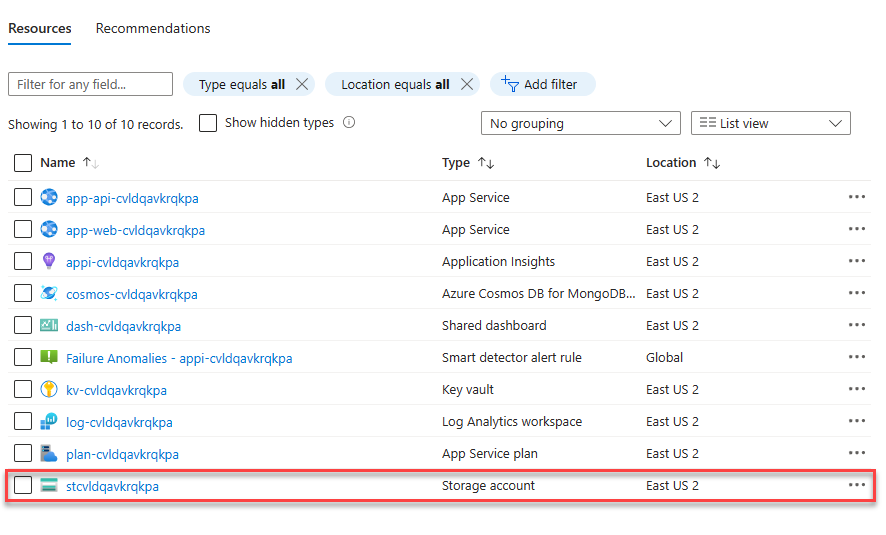Apply updates to your template
The initial azd provisioning and deployment process is a great way to get started with your app in Azure. However, once the environment is running, you'll want to start making changes to your app code or the Azure environment.
There are a few different workflows to choose from to update your Azure environment after making changes to the azd template. You can always run azd up again to update your environment regardless of whether you changed your application code or infrastructure files. azd up will complete the package, provision, and deploy steps every time it runs, so it's a simple way to ensure all of your changes are pushed out to Azure.
However, azd also offers more granular commands that map to specific stages of the developer workflow. These commands can also save time by skipping unnecessary checks or steps that you know haven't changed.
azd deploy- This command packages and redeploys your application source code to Azure. However, it won't execute any of the infrastructure as code files that apply changes to your Azure resources.azd provision- This command creates or updates Azure resources based on changes to your infrastructure as code files. For example,azd provisioncreates a new storage account in Azure if you add it to your Bicep or Terraform files. However, this command does not package or redeploy your application source code.
Update the app code
Your team is building a ticket-management app, not a Todo app, so you want to change the header text accordingly. Complete the following steps to update your application code and redeploy your changes using azd:
Locate the
header.tsxfile in thesrc/web/src/layoutdirectory of the template. If you're using Visual Studio Code, you can also use thectrl + pshortcut to search for theheader.tsxfile directly.Change the header display text around line 42 from
TodotoTicket Managerand save your changes.<Stack horizontal styles={logoStyles}> <FontIcon aria-label="Check" iconName="SkypeCircleCheck" className={logoIconClass} /> <Text variant="xLarge">Ticket Manager</Text> </Stack>In a command prompt window set to the root of your directory, run the
azd deploycommand. Wait for a moment whileazdredeploys your code.azd deployWhen the command finishes, revisit your app in the browser. The text in the upper left of the header should now read Ticket Manager.
Update the Azure resources
Your team is planning to add the ability for users to upload files with their ticket, such as images or screenshots of an issue they are encountering, or other service documents. You want to add an Azure Storage account to your environment that will hold these files. You also want to make sure the storage account is included during the initial setup when this template is provisioned to future environments. You can meet these requirements by modifying the infrastructure as code files for your template using the following steps:
In the
infrafolder at the root of your template, open themain.bicepfile.The template already contains a reusable Bicep module for creating storage accounts, so you can use it to add your own. Paste the following code snippet at the bottom of the
main.bicepfile around line 180 above where the output variables are defined:module storage './core/storage/storage-account.bicep' = { name: 'storage' scope: rg params: { name: '${abbrs.storageStorageAccounts}${resourceToken}' location: location tags: tags } }Save your changes, and then run the
azd provisioncommand.azd provisionwill use the infrastructure as code files in your template to update your Azure environment, but it will not redeploy any of your app source code.azd provisionWhen the command finishes, follow the URL the console prints to launch the Azure portal in your browser. You should see the resource group that holds all of your originally provisioned resources, including the new storage account.

Note
When working with azd, keep in mind that infrastructure as code files are idempotent, meaning no matter how many times you run them, the desired end state will remain consistent. Bicep or Terraform will apply changes to Azure so that your environment matches the state of your infrastructure files, but changes will not be applied to resources that already match the desired state.